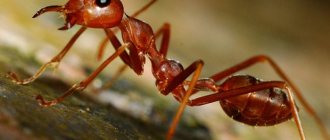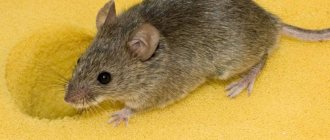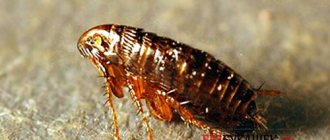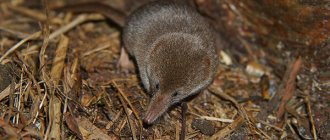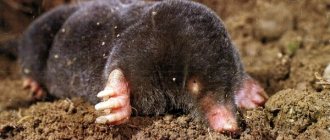Is it possible to have a bat as a pet?
The bat is a representative of the order Chiroptera. In appearance, she is quite attractive.
The animal's head resembles that of a mouse, which is why the animal was nicknamed a bat. The muzzle is slightly flattened, the nose has large nostrils. The ears are slightly extended upward. Throughout the body, except for the wings, the animal has pubescence, which, depending on the species, can be brown, black or white.
Did you know? The folded lip bat, native to Brazil, is capable of flying at speeds of 100 km/h.
As for keeping this animal at home, zoologists are clearly against such a neighborhood, because the animal requires space and privacy. But, if the area of the estate (estate) allows you to build an enclosure and create the necessary conditions that are required for normal life, then you can have a curiosity in it.
A bat lover talks about their life in the apartment
- So your pet is not a bloodthirsty breed? (Smile.) After all, vampire bats also exist.
— Many of our guests, seeing the Mouse for the first time, are sure to ask: does he drink blood? Indeed, there are vampire bats that are found in Central and South America. They have, in my opinion, the most unpleasant faces of all species. They sit on sleeping animals at night and bite - however, before doing this they anesthetize the victim, inject some type of analgesic into the wound - and then lap up the blood. The animal does not throw it off because it does not feel pain. They are carriers of all kinds of diseases. However, Nile fruit bats also spread... the Ebola virus. But this applies to animals living in caves in the Republic of Congo and Gabon. Ours is harmless (smiles).
HELP "MK"
“The Egyptian flying dog, or Nile fruit bat (Rousettus aegyptiacus), is a species of bat in the fruit bat family. Its closest relatives are bats. Widely distributed in the tropics and subtropics of the Eastern Hemisphere in almost any biotopes from sea level to mountain ranges. Numerous colonies of fruit bats inhabit the territory from the countries of the eastern Mediterranean (Turkey and Cyprus) to Pakistan and most of the African continent.”
— Angela, how did the idea of having a bat at home come about?
— I always wanted a bat! Since childhood I have loved spiders and bats; I had a raven at home... I like animals that most people don’t like. Before the bat, I wanted to get a tarantula spider. It looks menacing, but is non-poisonous. But the point is that they need to be fed with living creatures. I can not do that.
I spent my entire childhood in a remote village, but for some reason I never met a bat. Then we moved to Leninskie Gorki, and there, nearby, in the caves where bats lived, I finally managed to see one mouse. This was the first meeting.
And then I saw the movie “Wolfhound”! The main character had a big bat with a cute face. It turned out to be a flying fox. I started reading about these animals and learned that there are not only bats, but also fruit bats. And the latter just get along well with people. And the most amazing thing is that if in nature they live for about 15 years, then at home - up to 20 years! They live better in captivity. Nile fruit bats have long been bred at home. They try to buy them in pairs so that they don’t get bored. And once a year one, rarely two, mice are born. Mice are sold, they cost from 10 to 15 thousand rubles. We purchased it in 2015. I went to one of the famous ad sites, found an ad and bought it. She named him Horus - the name of one of the Egyptian gods, because the second name of the Nile fruit bat is the Egyptian flying dog. Horus or Horus, Horus - in Egyptian mythology, the god of the sky and the sun in the guise of a falcon, a man with the head of a falcon or a winged sun. But we are used to calling it more simply - Mouse.
There is also a public page on a social network, a community of breeders and fruit bat lovers. That's where they mostly buy mice. This group is led by a girl who lives in Australia and works in a bat rescue organization. They do a lot of flying fox work. They are more interesting, they are larger, but the injuries they cause are more serious. As this girl from Australia said, one of her colleagues was treating a flying fox and lost an eye! The mouse waved its wing... They have hooks on their wings. It's a good thing I didn't get a fox! (Smiles.) Even if my little mouse bites lightly, it doesn’t draw blood - their teeth are designed for chewing fruit.
He became very attached to me, and when I flew to another city on a long business trip, he began to waste away. He stopped eating, stopped flying, lost weight, and basically died. His mother took him to the veterinarian, who explained that the fruit bat was sad. These animals are very dependent on communication! Either they must live in pairs, or the owner must constantly communicate with him, otherwise the animal will die.
And his mother came out. Every evening I fed him fruit puree from a pipette, scratched his chest, and stroked him. And he came to life. When I returned from a business trip, he remembered me.
The owner of the fruit bat, Angela, dotes on her pet. Photo: Irina Brichkalevich
— What fruits does he prefer? Perhaps food is expensive?
- At first they told us that they love mangoes, avocados, figs... But our Mouse doesn’t eat these. Most of all he loves apples, and those from the Moscow region. Bananas, pears, tangerines, persimmons. They need to be cut into pieces. Once I gave him whole small bananas, but he didn’t eat them - he threw them away. And when I cut them, I ate them.
Fruit bats eat in a unique way: they chew the fruit for a long time, suck out the juice, and spit out the cake. I used to wash the cage every day, because the remains of the fruit were rotting and midges appeared. But then she came up with the idea of pouring pressed sawdust on the bottom of the cage, and even shared this life hack in the public. The sawdust absorbs the remaining fruit mass, and the cage can be washed once a month. I also line the outside of the cage with black polyethylene. Firstly, he feels calmer this way, it’s like he’s in a cave, and secondly, when he eats, his food flies in all directions. I think he's throwing it around! (Smiles.)
— What is his regime?
“In the evening I come home from work, open the cage, turn off the light and leave. Before going to bed, I go in and hang up food for him (he is out of the cage at this time). He should fly on an empty stomach, since fruit bats have a fast metabolism, and in 10–20 minutes the food will already be in processed form on the floor or walls. We leave him alone in the room all night; we don’t know what he does all this time. It can fly, it can hang on the curtains. At night we hear sounds coming from the room - when he flies, clicks like a cricket. Or barks, very subtly. By morning we find him in a cage, finishing the fruit - he flies into it himself when he gets hungry. Well, he sleeps during the day.
There was a funny incident. We usually let him out of the cage through the top door, but there is also a door at the bottom. Somehow he knocked down this lower entrance and we found him in the corridor crawling on his shoes. I decided to explore the apartment.
It is recommended to hang a white square - a curtain or a sheet - in the room for the fruit bats to make it easier for them to navigate. For us, white shelves serve as such a guide; he always flies to them first. One day he grabbed onto a khomus that was kept on a shelf (it’s a Yakut musical instrument), but he couldn’t unhook it and fell to the floor with it in his arms. Then he somehow drove away from this shelf in a car (smiles). There we have two miniature Volgas, just the size of a Mouse. One day the Volga disappeared. Then they found the machine on the floor, Horus flew with it and abandoned it.
They are also good at hiding. One day we searched for him for three hours. Then his mother found him and laughed for a long time - he simply hung himself under the clothes dryer, lost among the clothes hanging there.
— How often should you communicate with him?
- I look at his condition. If he is gloomy and doesn’t want to fly, I take him in my hands and stroke him or scratch him with a toothbrush - his chest, his back.
In general, Horus is very sociable. When friends came to us, six of them, he sat on each one, everyone scratched and stroked him.
He especially loves children. If they stick their fingers in, he always licks them. Apparently, children smell better than adults.
- So he gets along with your six-year-old son? Isn't this neighborhood dangerous?
- No, what are you saying, Kiryusha is not afraid of him, but loves him very much! He was two years old when we took Horus, and we had a normal picture - a child was sleeping, and in the corner above his crib there was a fruit bat hanging on the curtains.
Photo: Irina Brichkalevich
...We found a fruit bat in a cage, hanging upside down. We put him on the owner, he hangs on her, clinging to his shirt with his hooks. Horus turned out to be a charming animal, I immediately fell in love with him. These black, as if always surprised, such touching beady eyes, this delicate, soft fur... And he immediately began to lick my hands, which means that I aroused his trust. They put the fruit bat on Angela's son Kirill's back. The cat Musya immediately became interested in him.
— How do a cat and a bat communicate with each other? Aren't you afraid that she will eat him? Although it is winged, it is still a mouse.
— The cat is afraid of him. But he follows him with interest, watches him, smells him. When he lived with his mother, he played beautifully with her cat. They grew up together. Horus was flying, and the cat was jumping on him. However, she never released her claws during such fun. One day Horus was playing with her, everything was fine, but at some point he swooped down on her and hung on her like a bib. He hugged his neck. This necklace is made from a fruit bat. We've never seen a cat fly so high! You should have seen her eyes, she almost had a heart attack.
But you can’t play with our Musya like that. She puts out her claws all the time and can hurt the Mouse. That's why we never leave them alone.
Care Tips:
■ Fruit bats need movement and flight. It is possible to keep it in a spacious cage so that at least there is an opportunity to spread its wings. In this case, it is necessary to let them walk around the room for at least a few hours.
■ Feed daily with ripe, sweet fruits. A drinking bowl (for birds or rodents) - always with fresh water. Honey is periodically added to the drinking bowl (but not sugar!).
■ Children's vitamins in the form of syrup - 2 times a week, added to fruits.
■ Once every 3 months, conduct courses of magnesium and calcium: 10 days calcium D3 (at the tip of a knife), 10 days magnesium B6 (at the tip of a knife) - added to fruits.
■ Hang an ultraviolet lamp in the cage; it should burn 6 hours a day.
■ Every week, change the polyethylene that covers the outside and bottom of the cage; if there is no sawdust, change the tray daily. Wash the entire cage once a month.
■ Fruit bats are heat-loving creatures; the air temperature should be at least 25 degrees, and drafts are dangerous to their health.
Dear readers!
Send your questions and suggestions to [email protected]
Animal behavior
Chiropterans are nocturnal animals. In their usual habitat, they are awake in the dark and sleep during the day. You should not expect that a newly caught or purchased animal will immediately adapt to new living conditions.
This will take time, and it is individual for each animal. In the first few days after a bat moves into a new home, the animal may completely hide and not show itself. Don’t worry, because this is a natural process of adaptation to a new place and conditions.
Important! If a wild bat, after moving into the enclosure, does not show activity for more than 4-5 days, it is better to release it into the wild, because the animal may die in captivity from longing for its usual way of life.
What do bats eat at home: planning their diet and diet
At home, the animal will willingly eat:
- mealworms;
- adult beetles (chafer beetles);
- pupae;
- crickets;
- Zophobas (larvae of darkling beetles);
- milk mixture.
To increase the nutritional value of the worms, 3-4 days before the mouse meal, put them in flat jars and treat them generously with vitamins and protein: meat (boiled and raw), fresh vegetables (carrots, cabbage), you can give white bread dipped in milk. Before feeding the mouse, be sure to separate the worms from the remains of their food.
Composition of milk formula for mice:
- milk (1 glass is enough);
- 1 egg yolk;
- purified beer yeast (or bran, you will need wheat) -1 tsp;
- Ca glycerophosphate liquid or granules - 5 g;
- honey or rosehip syrup - 1 tsp;
- vitamin E - 2 drops.
Sometimes you should add 2-3 crushed multivitamin tablets to the finished product.
For the first feeding, you should pick up the mouse in its usual position and bring the mealworm directly to your mouth. Then the animal itself learns to eat them from the jar. The milk mixture is fed using a pipette. It is given periodically for 7 days, then a break for 1–2 weeks. Give out worms and insects in portions 5-6 times a week.
It is enough to feed a healthy individual once a day - in the evening, when it begins to be active. For a sick, weakened woman, 3-4 times a day, a liquid vitamin-yeast cocktail made from milk is a must in her diet.
How to determine the amount of food your pet needs? Flyers do not hunt at home; they get food more easily than wild ones - keep in mind that they are prone to gluttony. The rufous noctule can “persuad” hundreds of mature mealworms at a time, while the sharp-eared noctule can “persuad” 50–60. For their health, you need to reduce such portions by half. In the first days in a new place, during the adaptation period, 1/4 of the maximum dose is enough - 15–20 worms is enough.
Further, in the process of observing the animal, you will adjust the regime and diet according to its individual needs. Do not feed the mouse from your table or other food not intended for it - this will kill the animal.
Rules for keeping at home
In order for bats to feel comfortable, they will need to create conditions that are as close to natural as possible. You shouldn’t even think about keeping such an animal in cramped enclosures measuring less than 2.5x3 m. Before getting such animals, you should carefully study their habitat. Read on to learn how to properly arrange the space in an enclosure and what temperature is necessary for a mammal to stay comfortably in it.
How to arrange your home
In their natural habitat, bats live in caves, mountains or attics. It would be advisable to make the ceiling and one of the walls of the room stone or sculpt reliefs reminiscent of small gorges. The enclosure should also have a lot of vegetation. Ideally, if the room is built near a residential building, in the place where the standard tree grows. Also in such a house you can make beds with plants or create a rock garden.
You will be interested to know what to feed your bat at home.
Optimal temperature
When arranging a home for an exotic pet, you should take care of the temperature inside the room. Chiropterans are thermophilic, and for their comfortable life it is necessary to maintain the air temperature at +30°C.
When an animal stays in a cool environment for a long time, it begins to have problems with digestion and sleep, which can lead to illness and even death. Therefore, the enclosure must be equipped with a system of special manholes in which the animal can warm up.
Important! With the onset of seasonal cooling, bats hibernate, during which they are placed in a warmer place.
Is it possible to keep a bat at home?
The bat is an extremely difficult pet. “And I want to fly!” It is impossible to ignore the animal’s desire (it will wither away), which means that it will be necessary to provide air space. This should be a free enclosure of sufficiently large size. You need to cover the floor with paper and clean it regularly, changing the bedding (animals defecate in flight).
But the main difficulty with the enclosure is not its size. The fact is that the body temperature of bats changes, this is due to their motor activity - it is different during sleep, rest and flight. The ambient temperature should change accordingly - several times during the day. For the digestive system of an animal to function, a temperature of +30…35°C is required. If the temperature is lower, the stomach and intestines of the mouse function worse - instead of digestive processes, putrefactive processes occur in it, which can soon lead to the death of the animal. Too low a temperature also has a bad effect on the animal’s sleep - as a result, it gets sick.
To make the enclosure suitable for keeping your pet:
- it should have several compartments with different temperatures, the compartments are separated by a stainless metal mesh with small cells and the edges are carefully sealed to avoid injury to the pet;
- holes are made between the compartments so that the mouse can independently choose a comfortable temperature mode;
- drinking bowls are required;
- a compartment is needed for hibernation, which lasts 1.5 months - there should be a gradual decrease in temperature. Before hibernation, the animal is not fed for three days; 48 hours before going to bed, it is placed in a compartment evenly cooled to +3...5°C, and the animal’s condition is carefully monitored. If any deviations are noticeable, you need to move the mouse into a warm place, artificially interrupting winter sleep. In the first days, the awakened pet is hand-fed with formula milk and a small portion of regular food.
How to properly care for a bat
Like any other pet, bats must be kept clean. To do this, you should clean the floor from excrement as often as possible. If there are plants indoors, they are watered, hilled and other necessary procedures are carried out to care for them.
Caring for bats includes:
- feeding;
- taming a pet.
Diet
Bats need to drink plenty of fluids. Therefore, many drinking bowls should be placed around the perimeter of the enclosure. The water should be at room temperature, collected from a well or other drinking source. It is necessary to change the water every day so that it does not stagnate.
The food of a chiropteran pet consists of:
- worms;
- insect pupae;
- Zhukov;
- milk formulas.
Taming and communication
If a person purchased a baby bat from a nursery, it is quite possible that over time it will be possible to establish contact with it. But, as for adult individuals who are specially caught in order to be placed in a cage, you should not expect even a small amount of attention from them.
Did you know? The bumblebee bat, native to Thailand, is the smallest mammal in nature.
Such animals cannot be called tame; they will not sit and wait for the owner, like a devoted dog or cat. The concept of “communication with a bat and its taming” means observing the animal and possibly feeding it by hand.
Other nuances of content
It is difficult to keep bats in an apartment or house without an enclosure. They love to hide in hard-to-reach places (narrow corners, cracks between walls and furniture), from where they sometimes cannot get out on their own without injury.
Some individuals are very easy to tame. Aggression and fear in an animal can be caused by the wrong way to hold it - head up, but for it this is just as “comfortable” as if we were held upside down.
But keep in mind that you will have to communicate with your pet at night - somewhere from 23.00 to 07.00 the mouse is awake. Pay attention to your tame animal - otherwise you will end up with a depressed, lethargic animal.
If you do sleep at night, flights will disturb you with noise. And if you let the mouse fly freely, then furniture, appliances, and curtains will be covered in droppings.
Bats can breed if you have a lot of them and they live in a non-residential building (an old chicken coop, barn). Older babies will need a separate enclosure.
These animals get sick when kept at home from:
- temperature violations;
- improper feeding (they are able to eat up to 60% of their own weight at a time. Limited activity and excess food lead to obesity and indigestion, both conditions are deadly for animals).
Banana Leaf Beetle
These unique creatures come from Mexico. They prefer to live in trees, caves or on the surface of rocks.
Their main distinguishing feature is their long tubular muzzle. They were given such a non-standard appearance because banana leaf-noses feed exclusively on fruit nectar. These little bats do a lot for our ecological system by helping to pollinate plants.
Damage from bats
List of ways that an animal can harm you:
- Bats are very shy and may bite you, which can be a problem if the animal has rabies.
- If an animal is in the house for a long time, it leaves droppings, the vapors of which are dangerous to humans and can cause some diseases.
- Psychological pressure due to the sounds made by the animal.
However, despite all the disadvantages, there is also a positive side to this issue: bats can cleanse your own home of the pests that inhabit it.
Wool
The creature, based on the descriptions of different species, also differs in color. In 75% of cases, the mammal is gray, dark gray, or brown. This coloring helps to hide from predators and makes them invisible at night.
Mexican piscivorous species have yellow or orange fur. Some species are light yellow in color. Representatives of Honduras are albinos with yellow ears and nose.
The body and head are covered with fur. The wings are bare, with soft skin. This feature also applies to young nocturnal animals. The fur can be thick or sparse, with long or short pile. The habitat of the species plays a role here.
Interesting fact! There really is a vampire bat. But it feeds exclusively on the blood of small animals. It poses no danger to humans, even if she is very hungry. Maximum harm from flyers: babies fly poorly, so a collision may occur. Only the cub suffers from such blows.
Philippine tubenosed fruit bat
The Philippine tubenosed fruit bat can lay claim to the title of the best hide-and-seek player on the planet - the first individual of this species was discovered only in 1984. It is unfortunate to admit that today these amazing creatures are in danger of complete extinction due to uncontrolled deforestation of rain forests in the Philippines. It is vital for this species to settle in dense and healthy forests. We can only hope that these creatures will not lose their homes due to human whims.
Like many other species of bats, Philippine fruit bats play an important role in our ecosystem by dispersing the seeds of the fruits they eat.


